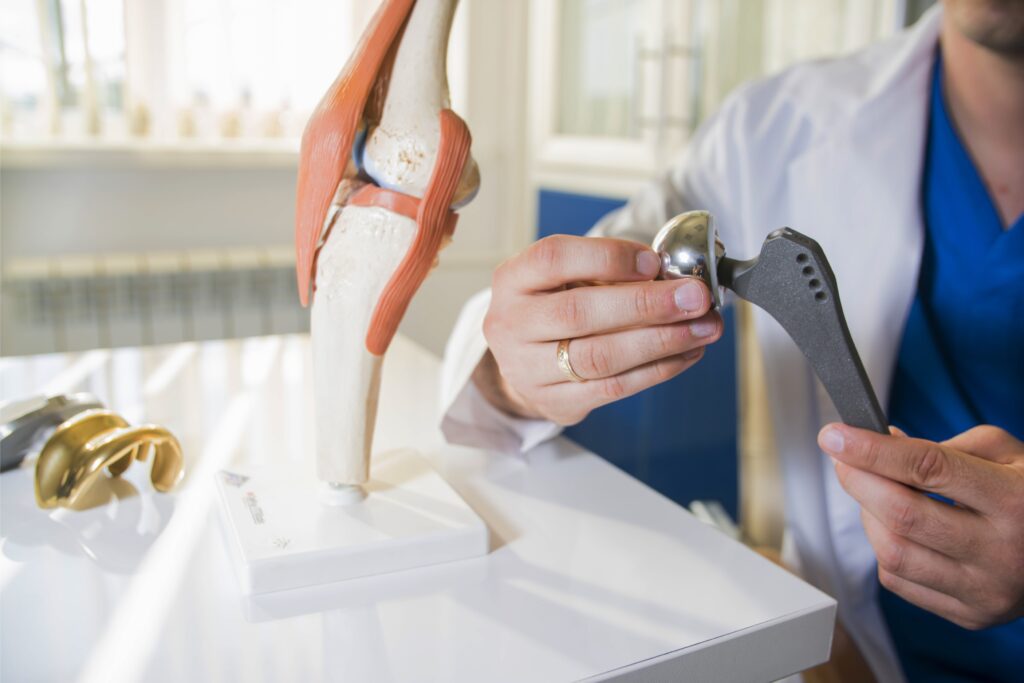
Joint replacement surgery is a medical procedure that has helped millions of people worldwide to regain their mobility, reduce their pain and improve their quality of life. Advances in technology and surgical techniques have made joint replacement surgery safer and more effective than ever before. In this blog, we will explore the latest advancements in joint replacement surgery, including knee and hip joint replacement surgeries.
Joint Replacement:
Joint replacement is a surgical procedure that involves the removal of a damaged or diseased joint and replacing it with a new artificial joint. This procedure is typically used to treat severe joint pain and stiffness caused by arthritis or injury.
Advances in medical technology and surgical techniques have also led to improvements in the success rates and longevity of joint replacements.
Joint replacement surgery typically involves three main steps:
- Preparation: The patient is given general anaesthesia, which puts them to sleep and eliminates pain during the surgery. The surgeon then makes an incision to access the affected joint.
- Removal: The damaged joint is removed, along with any damaged tissue or bone. The surgeon then prepares the remaining bone for the new joint by shaping it to fit the prosthesis.
- Implantation: The new artificial joint, or prosthesis, is then implanted into the prepared bone. The prosthesis can be made of a variety of materials, including metal, plastic and ceramic. Once the prosthesis is in place, the surgeon closes the incision with stitches or staples.
key advantages of Joint Replacement:
- Reduced pain and stiffness: Joint replacement surgery can eliminate chronic pain and stiffness, allowing patients to move more freely and engage in daily activities more comfortably.
- Improved mobility: After joint replacement surgery, patients typically experience improved mobility and range of motion, which can allow them to participate in activities they may have previously avoided.
- Enhanced quality of life: With increased mobility and reduced pain, joint replacement surgery can greatly improve a patient’s overall quality of life, allowing them to enjoy their daily activities with greater ease and comfort.
- Long-lasting results: Thanks to advances in medical technology and surgical techniques, joint replacements can last for many years, providing patients with long-lasting relief from pain and discomfort.
- Improved mental health: Chronic pain can take a toll on mental health, leading to depression, anxiety and decreased quality of life. Joint replacement surgery can alleviate pain and improve overall well-being, promoting better mental health outcomes.
Advancements in Joint Replacement surgery:
- Minimally Invasive Surgery
One of the latest advancements in joint replacement surgery is minimally invasive surgery. This technique involves making smaller incisions than traditional surgery, which means less pain, less scarring and a faster recovery time. In knee replacement surgery, for example, a surgeon may use a smaller incision and specialized tools to remove damaged tissue and replace it with a prosthetic joint. Minimally invasive surgery has revolutionized joint replacement surgery and has made the procedure more accessible to patients.
- Computer Navigation and Robotics
Computer navigation and robotics are another advancement in joint replacement surgery. This technology allows surgeons to plan and execute surgeries with more precision and accuracy. Computer navigation uses advanced imaging techniques and computer software to create a 3D model of the patient’s joint. This helps the surgeon to plan the surgery, position the implants correctly and avoid any potential complications.
- Custom Implants
Another advancement in joint replacement surgery is custom implants. In the past, joint replacement surgery involved using standard-sized implants that were designed to fit most patients. However, this approach sometimes resulted in an ill-fitting implant, which could lead to complications and the need for revision surgery. Custom implants are designed to fit each patient’s unique anatomy, which reduces the risk of complications and improves patient outcomes.
- Regenerative Medicine
Regenerative medicine is a new field that has the potential to revolutionize joint replacement surgery. This approach involves using stem cells or other cells to repair damaged tissue and promote healing.
Difference between Joint Replacement and Joint Preservation
While joint replacement surgery can be life-changing for many patients, it is important to note that it is not the only option available. Joint preservation techniques, such as physiotherapy, medication and lifestyle changes, can help delay or avoid the need for joint replacement surgery altogether. Joint preservation techniques focus on slowing down the progression of joint degeneration and reducing pain and inflammations.
Joint Replacement Surgery has come a long way thanks to advancements in medical technology and surgical techniques. The latest advancements include minimally invasive surgery, computer navigation and robotics, custom implants and regenerative medicine. These advancements have made joint replacement surgery safer, more precise and more effective than ever before, resulting in improved patient outcomes, reduced pain and stiffness and enhanced quality of life.
While joint replacement surgery is a viable option for many patients, it is important to note that joint preservation techniques can help delay or avoid the need for surgery altogether. Dr Ashish Suryawanshi, a leading orthopaedic surgeon offers a range of joint preservation treatments and surgical options to help patients find the best solution for their unique needs.
Contact Dr Ashish Suryawanshi at https://www.drashishsuryawanshi.com/ to learn more about your options and to schedule a consultation.




